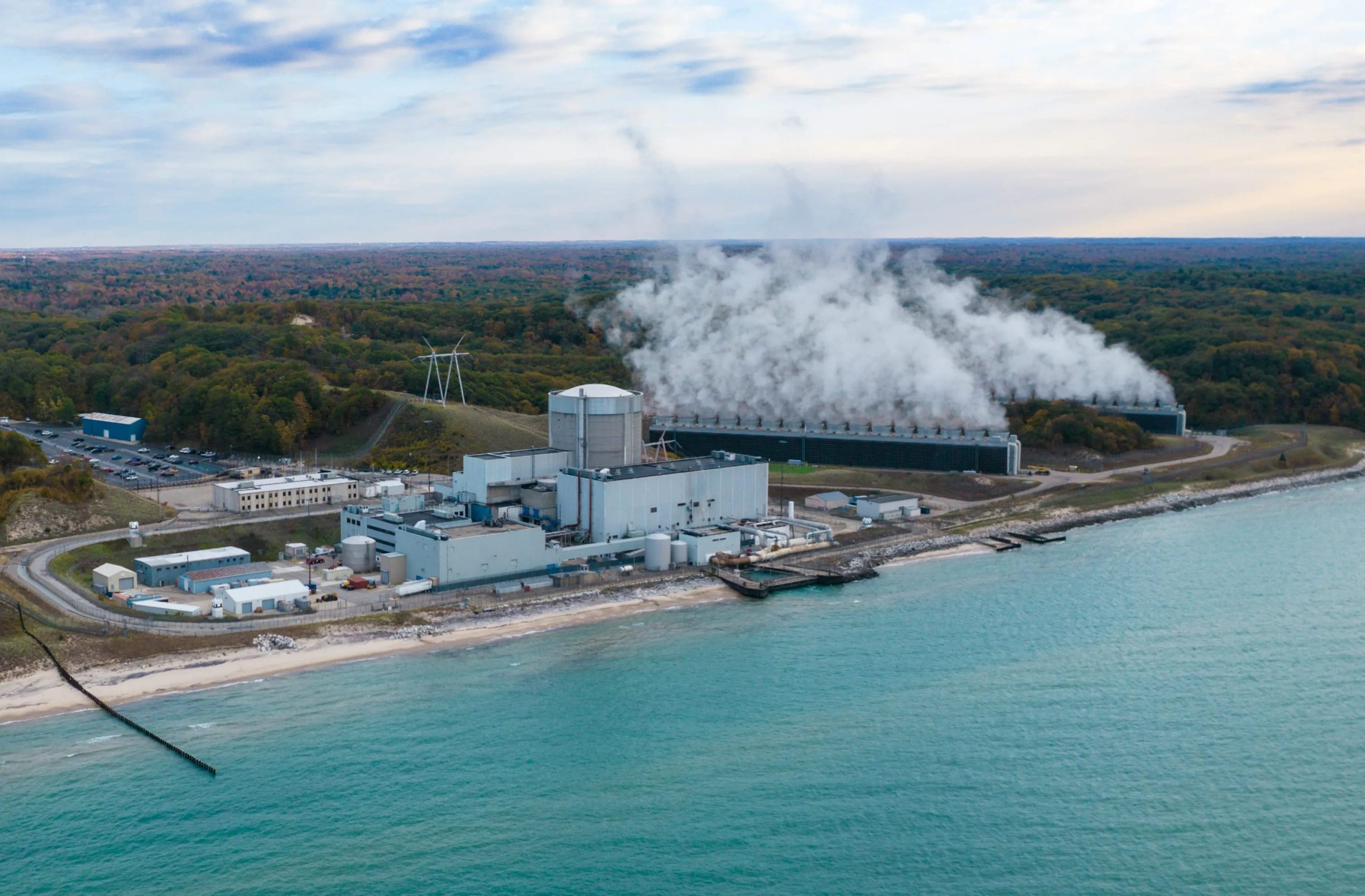Science and technology

Science and technology
30
When Giants Influence Orbit: How the Chinese Dam Is Changing the Flow of Earth’s Time
In an era when time seems to be the most precious resource, science once again reminds us: its value is not as immutable as it seems. NASA officially confirmed that the massive hydropower plant "Three Gorges," which crosses the Yangtze River in Hubei province, China, affects not only the region's energy balance — it literally alters the length of the day on the planet.
According to Dr. Benjamin Fong Chong, a leading geophysicist at NASA's Goddard Space Flight Center, this engineering colossal, holding over 40 cubic kilometers of water — nearly 10 trillion gallons — has increased the length of the day by 0.06 microseconds. A seemingly negligible change, which, nonetheless, can be accurately measured with modern high-precision instruments.
"It's like a figure skater opening their arms, slowing down the rotation," notes Dr. Chong. "The mass of water lifted 175 meters above sea level alters the distribution of mass on the planet. This effect is minimal but entirely real."
The impact of such a large-scale project is felt not only in numbers. According to NASA, the object shifted the Earth's axis of rotation by approximately two centimeters. These microscopic changes do not have a direct impact on our daily lives, but they emphasize: human infrastructure is already capable of influencing the dynamics of the entire planet.
And although the increase in the length of the day by 0.06 microseconds is only a third of a billionth of a second, in the scales of geophysics and planetary science it sounds like a distant thunder: not loud, but distinctive.
The "Three Gorges" dam, completed in 2012, is not only an architectural marvel but also one of the most controversial energy projects in the world. With a capacity of 22,500 megawatts, it generates as much electricity as 15 nuclear reactors, providing China with critically needed renewable energy and reducing coal use. At the same time, its ecological and geopolitical price has repeatedly become the subject of intense debates.
For NASA experts, this is yet another example of how human engineering is already embedded in Earth's geological history. "Large infrastructure objects like this dam demonstrate how closely local actions are intertwined with global consequences," summarizes Chong.
And if you are currently asking yourself what can be done with your new 0.06 microseconds — unfortunately, the answer is not much. However, it serves as a reminder of our progress in not only impacting the environment but also precisely measuring it — even on scales smaller than a breath.
06.05.2025

Science and technology
61
Revolutionary 3D scanning reveals new facts about the sinking of the Titanic
On the 113th anniversary of the legendary «Titanic» disaster, which has forever been etched in history as one of the most tragic maritime events, National Geographic presented a sensational documentary project that sheds new light on the circumstances of the ship's sinking. Thanks to advanced 3D technologies, researchers have created a detailed digital model of the liner — down to each rivet, hatch, and even steam valve.
The project was implemented in 2022 by a team led by director Anthony Geffen, with the participation of deep-sea mapping specialists from Magellan company. Analyzing the collected data took almost two years, during which scientists conducted one of the most extensive studies of the shipwreck debris lying at a depth of over 3.8 km beneath the North Atlantic surface.
One of the key findings of the study is the discovered open steam valve, which indicates that many crew members remained at their posts until the end, maintaining the power supply. These heroic efforts allowed signals of distress to be transmitted longer, even though there were hardly any ships around capable of coming to help — the nearest was hundreds of miles away.
The scan results also cast doubt on the classic portrayal of the «Titanic» sinking popularized by James Cameron’s film. Unlike the dramatic scene of the ship breaking in two, the research shows that the hull was literally torn apart with brutal force, destroying the first-class cabins, where passengers such as John Jacob Astor and Benjamin Guggenheim likely were.
Another important point is the rehabilitation of first officer William Murdoch. For decades, he was accused of fleeing the scene, but new evidence suggests that he perished along with the crew during the attempt to rescue others, unable to reach the lifeboats.
The insufficient number of life-saving equipment on board the «unsinkable» ship also remained a critical problem: only 20 lifeboats capable of holding up to 1,200 people, which is significantly less than the 2,240 passengers and crew members onboard.
Besides historical discoveries, the documentary draws attention to the current state of the wreckage. Deep-sea 3D scanning has shown that the remains of the ship are rapidly deteriorating — pressure, corrosion, and bacterial colonies continue to ravage the legendary structure.
Nonetheless, in 2026, billionaire Larry Connor plans to conduct a new expedition to the disaster site using an underwater vehicle. This initiative has already sparked a wave of criticism — from scientists, governments, and relatives of the victims, who urge to respect the memory of those who perished and not turn the tragedy site into a sensational spectacle.
The new National Geographic documentary not only offers a unique visual experience but also rethinks the heroism, sacrifices, and circumstances of one of the saddest pages in human history.
05.05.2025

Science and technology
358
The asteroid that passed Earth could collide with the Moon in 2032
Asteroid 2024 YR4, which was previously considered potentially hazardous to Earth, may now pose a threat to the Moon. Recent observations, including those using the James Webb Space Telescope (JWST), have allowed for a refinement of the characteristics and trajectory of this celestial body.
Discovery and initial risk assessments
Asteroid 2024 YR4 was discovered in December 2024. Initial calculations indicated a possibility of its collision with Earth on December 22, 2032, which at one point reached a probability of 3.1%. This caused significant concern among scientists and the public.
Asteroid 2024 YR4 in images from the James Webb Telescope. Source: NASA, ESA, CSA, STScI, A Rivkin (JHU APL)
Refinement of parameters with JWST
Further observations, including those with JWST, allowed a more precise determination of the asteroid's size and composition. Its diameter is estimated to be between 53 and 67 meters, larger than previously anticipated. The surface of the asteroid was found to be rocky, without a significant dust layer, and rapid rotation of the object was also recorded.
Trajectory change and potential threat to the Moon
Thanks to the refined data, scientists concluded that the risk of 2024 YR4 hitting Earth in 2032 is practically nonexistent. Instead, there is a probability (about 3.8%) of it colliding with the Moon in December 2032.
Possible consequences of a collision with the Moon
If the asteroid collides with the Moon, it will create a crater up to 2 km in diameter. Since the Moon lacks an atmosphere, the impact would occur unobstructed, and the resulting crater would be clearly visible from Earth with telescopes or even binoculars. For the scientific community, this would be a unique opportunity to observe the process of lunar crater formation in real time, which could provide valuable data for planetary defense of Earth.
Further observations and conclusions
Although the risk to Earth is absent and the probability of collision with the Moon remains low, astronomers continue to monitor 2024 YR4. The next favorable observation window is expected in 2028, when the asteroid will again approach Earth, allowing for better orbit refinement and more accurate predictions of its future movement.
19.04.2025

Science and technology
179
Revolution in the Battery Sector: FIU Researchers Solved the Range Issue
One of the main obstacles to mass adoption of electric vehicles remains the so-called "range anxiety" – the fear that the vehicle might run out of power while on the road, leaving the driver without quick recharging options. But new research from Florida International University (FIU) could fundamentally change the situation.
Researchers are working on revolutionary lithium-sulfur batteries that can increase the driving range of electric vehicles threefold – up to 1,000 miles without recharging. Additionally, they are cheaper, lighter, and less harmful to the environment than traditional lithium-ion batteries.
What distinguishes new batteries from existing ones?
Range – increasing mileage from 300 to 1000 miles.
Cost – such batteries could be nearly half the price of lithium-ion counterparts.
Durability – they withstand more charge cycles, eliminating the need to replace the battery throughout the vehicle's lifespan.
Environmental friendliness – they use sulfur, a byproduct of the oil industry, reducing the need for extracting scarce metals.
Scientific breakthrough: platinum as a catalyst
Despite their advantages, lithium-sulfur batteries previously had a critical drawback – they degraded quickly and lost capacity. However, Professor Bilal El-Zakhab and his team found a solution.
How does it work?
Scientists added platinum to the battery composition. It acts as a "traffic regulator," directing the flow of energy inside the accumulator. This helps reduce energy losses and improves charging efficiency.
Economy and accessibility
Cost reductionCurrently, lithium-ion batteries cost about $100 per kilowatt-hour, whereas lithium-sulfur batteries could potentially cost $60 per kilowatt-hour. This will decrease the overall price of electric cars, making them more accessible.
Lighter weight – longer tire lifeSince new batteries are twice as light, electric vehicles will cause less wear on tires and other components, which will also reduce maintenance costs.
When will the technology be available?
FIU has already received $4 million in investments from the Canadian company Lion Battery Technologies. Commercial production is expected to start by 2030, although the technology still requires further refinement.
Competition for the “ideal battery”
FIU is not the only laboratory working on alternatives to lithium-ion batteries:
Purdue University is experimenting with recycled plastic to extend the lifespan of sulfur batteries.
Researchers from Australia have applied a chemical catalyst based on polyvinylpyrrolidone to stabilize batteries.
It is expected that by 2030, global automakers will spend over $500 billion on the development of electric transport and battery technologies.
Conclusion
Lithium-sulfur batteries are the future of electric transport. They are cheaper, lighter, and more environmentally friendly than traditional lithium-ion batteries. A range of up to 1000 miles will eliminate “range anxiety” and make electric vehicles even more attractive to the mass consumer. Commercialization is expected within the next decade, which could significantly transform the entire electric transport industry.
13.04.2025

Science and technology
331
Cleveland could become NASA's new home: Ohio offers unique opportunities
Why Cleveland?
Ohio Governor Mike DeWine officially addressed President Donald Trump with a proposal to relocate NASA's headquarters to Cleveland, specifically to the Glenn Research Center. In his letter sent on Friday, he emphasized that this move would be economically advantageous and strategically sound for the future of the US aerospace industry.
Ohio – the heart of American aviation
DeWine noted that Ohio is the cradle of aviation and one of the main centers for aerospace innovation in the United States. The state is home to:
US Air Force Research Laboratory at Wright-Patterson Air Force Base
Aerospace and Defense Innovation Center
NASA Glenn Research Center
According to the governor, synergy among these institutions will help NASA gain unique opportunities for research and development.
Economic benefits and decentralization
DeWine also emphasized that relocating NASA’s headquarters would align with the policy of decentralizing federal agencies, supported by the Trump administration.
Main advantages of Cleveland over Washington:
Lower living and operational costs
Access to leading research institutions
Stimulating regional economic development
What does this mean for Ohio?
If NASA’s headquarters relocates to Cleveland, it will:
Secure Ohio’s position as an international leader in space research
Provide new investments in high-tech industries
Create new jobs and development opportunities for the region
"Relocating NASA's headquarters to Cleveland would strengthen Ohio’s position as an international leader in space exploration and aeronautics," — emphasized DeWine.
Now, the decision rests with the Trump administration and NASA leadership. If the proposal is supported, it will be a historic step for Ohio and the entire US aerospace industry.
28.03.2025

Science and technology
210
Holtec expands the small modular reactor construction plan at the Palisades Nuclear Power Plant
The Holtec International company is stepping up its efforts to build the first small modular reactors (SMRs) in the United States at the Palisades nuclear power plant site in Cowpert, Michigan. On Tuesday, Holtec signed a broader agreement with Hyundai Engineering & Construction, marking an important step toward realizing this ambitious project.
It is expected that the first reactors will be built by 2030. Holtec also plans to restart the Palisades nuclear power plant, which will serve as a starting point for a nuclear renaissance in the U.S.
Holtec’s Plan: a New Era of Nuclear Power
Holtec and Hyundai held a ceremonial signing event on the premises of the Palisades nuclear power plant. Company representatives stated their intention to build a park of small modular reactors across North America throughout the 2030s.
«The project to restart the Palisades plant along with the construction of small modular reactors will make southwest Michigan a center of nuclear innovation», — said Holtec.
Currently, Holtec is preparing to obtain a construction license from the U.S. Nuclear Regulatory Commission in early 2025.
What are small modular reactors?
According to the International Atomic Energy Agency (IAEA), small modular reactors can produce about a third of the energy generated by large nuclear power plants.
Key advantages of SMRs:
Smaller size and easier maintenance
Can be quickly factory-produced
Easy to transport and install
Flexible in managing energy systems
Despite the promising technology, currently no small modular reactors are in operation in the USA. In 2023, the U.S. Department of Energy announced support for seven advanced nuclear projects, including the Palisades project, but all are still in development stages.
Holtec and Hyundai: The Path to “Mission 2030”
Holtec is actively developing its SMR-300 program, which involves constructing compact 300-megawatt reactors. Each will be capable of supplying electricity to approximately 300,000 homes.
Over the past year, Holtec has:
Determined the exact location for the future reactors
Launched Groundwater Monitoring Program
Carried out soil drilling to prepare the site
Holtec’s CEO Chris Singh expressed confidence in the implementation of “Mission 2030,” noting Hyundai’s experience in nuclear construction.
“Hyundai E&C has an outstanding track record – they successfully built the world’s largest nuclear complex in the UAE, which is a rare achievement in our industry”, — Singh stated.
Michigan Supports the Development of Nuclear Energy
At the same time, Michigan legislators developed a plan to promote nuclear energy development in the region. Key initiatives include:
Simplify procedures for deploying small modular reactors in MichiganFund educational programs in nuclear and hydrogen energyIntroduce tax credits for companies investing in new nuclear technologiesSupport jobs in the nuclear energy sector
The plan was signed by state legislators: Poline Wenzel, Joey Andrews, Jamie Thompson, Mike McFall, Sem Steklov and Greg VanWorcom.
“This plan creates a foundation for Michigan’s future energy — reliable, affordable, and innovative”, — said Greg VanWorcom.
What’s Next?
Thanks to the partnership between Holtec and Hyundai, as well as support from the Michigan government, the region could become a leader in clean nuclear energy.
Next steps:Obtaining construction permits in 2025Launching the small modular reactor projectImplementing “Mission 2030”
If the plan is successfully executed, Michigan will become a pioneer in the development of advanced nuclear energy in the USA, creating thousands of jobs and strengthening the country’s energy security.
19.03.2025

Science and technology
361
Ukraine – a global leader in drone manufacturing: how the war has changed the UAV market
Ukrainian drones are reaching a global level
The war in Ukraine has become a true testing ground for modern technologies, especially in the field of unmanned aerial vehicles. Ukrainian manufacturers, who are forced to operate in extreme conditions, create effective, reliable, and affordable UAVs that are changing the rules of warfare.
Against this backdrop, the Pentagon has begun to pay increasingly more attention to Ukrainian drones, as they have already proven their effectiveness in challenging combat conditions. Currently, the U.S. Department of Defense is actively exploring the possibility of collaborating with Ukrainian companies in the field of unmanned technologies.
Why are American military startups lagging behind Ukraine?
Despite significant investments in defense technologies, the USA has yet to develop drones that fully meet the challenges of modern warfare. Many American companies develop drones that cost millions of dollars, but in practice, they often do not withstand the conditions of electronic warfare (EW) or are unable to quickly adapt to battlefield changes.
Ukrainian manufacturers, working under real combat conditions, have been able to optimize manufacturing processes and create drones that cost 10 times less than their American counterparts, while remaining significantly more effective.
Ukraine and the USA are united in UAV production efforts
American military startup CX2 has already signed an agreement with Ukrainian companies to integrate their sensors and software into Ukrainian drones. Additionally, the Pentagon has entered initial contracts with Ukrainian-American enterprises through the Defense Innovation Unit (DIU) — a special division focused on implementing cutting-edge defense technologies.
It is expected that in 2025, Ukrainian long-range drones will undergo testing in the United States, after which they may receive contracts for serial production for the U.S. Army.
"No American company can compete with the production level now present in Ukraine," emphasizes Olga Pogoda, co-founder of the startup Blue Arrow, which tests its drones alongside elite Ukrainian military personnel.
Obstacles to the export of Ukrainian drones
Despite Pentagon interest, several serious challenges stand in the way of Ukrainian drones entering the global market:
Export restrictions imposed by the Ukrainian government
Dependence on Chinese components, complicating cooperation with the U.S. military
Political risks, related to possible shifts in relations between Kyiv and Washington
Ukrainian manufacturers are already lobbying for lifting export restrictions on drones and are seeking alternative suppliers for components to meet Pentagon standards.
The future of the Ukrainian drone industry
Despite the challenges, collaboration between Ukraine and the USA in the field of UAVs is only strengthening. Kyiv clearly stated that after the war, Ukraine should become a world 'capital' of drones, and this goal seems entirely feasible.
Startups such as Skyfall, Blue Arrow, KEF Robotics, and Sine.Engineering are actively seeking international investors to continue innovative development and solidify Ukraine’s status as a leader in military UAVs.
13.03.2025

Science and technology
246
Microsoft announced the creation of a revolutionary quantum chip called Majorana 1
On February 20, 2025, Microsoft announced the creation of a revolutionary quantum chip called Majorana 1, which uses a new state of matter — a topological superconductor. This development marks a significant breakthrough in the field of quantum computing, paving the way for the creation of ultra-powerful quantum computers capable of solving tasks inaccessible to modern classical systems.
New state of matter: topological superconductor
The basis of Majorana 1 is the use of a topological superconductor — a material that allows the creation and control of so-called Majorana fermions. These subatomic particles have unique properties that make them less prone to errors and more controllable compared to traditional qubits. Using Majorana fermions enables the creation of topological qubits, which are more stable and reliable for scalable quantum computations.
Microsoft CEO Satya Nadella emphasized the importance of this discovery, noting that the new material was discovered after nearly two decades of research and is a key element in creating more stable qubits. This breakthrough could lead to the development of quantum computers with a million qubits on a single chip, enabling the resolution of complex problems, inaccessible to current computers.
Potential of quantum computing
Quantum computers have the potential to revolutionize various fields, from cryptography to drug development. Thanks to their ability to process vast amounts of data and perform complex calculations much faster than classical computers, they can contribute to significant breakthroughs in science and technology. For example, in healthcare, quantum computing could accelerate the discovery of new medicines by modeling molecular interactions at the quantum level. In environmental science, they could help develop new materials for cleaning the environment or more efficient energy use.
Competition and prospects
Although Majorana 1 currently has fewer qubits compared to competitors like Google and IBM, its advantage lies in its lower error rate, making it more efficient. Microsoft forecasts that the commercial viability of these powerful quantum computers will be achieved within a few years, not decades, despite the challenges associated with scaling the technology.
The development of Majorana 1 was made possible thanks to the work of Microsoft laboratories in Washington State and Denmark, highlighting the global nature of research in this field. Competitors such as Google, IBM, and even the Chinese government are also actively investing in quantum technologies, which indicates a high level of interest and competition in this area.
Challenges and future
While the development of practical and reliable quantum computers may take several more years, Microsoft aims to create a functional quantum computing system by the end of this decade. This achievement carries significant geopolitical consequences, as both the USA and China are competing in the development of this technology. However, experts call for cautious optimism, as the field of quantum computing remains complex and filled with challenges.
The success of Majorana 1 is the result of nearly two decades of research by the company in the field of quantum computing. This breakthrough opens new possibilities for creating scalable and reliable quantum systems that could have a significant impact on various sectors, from medicine to ecology. Thanks to developments like Majorana 1, the future of quantum computing is becoming increasingly nearer and more tangible.
20.02.2025

Science and technology
189
iPhone SE 4 Almost Here: What Is Known About It So Far
Apple's CEO Tim Cook hinted at an announcement scheduled for Wednesday, February 19, and it seems that this mysterious announcement will be for the next generation iPhone SE.
We’ve been hearing about the iPhone SE 4 for quite some time, and essentially, we know everything there is to expect. If you want to see what’s coming, read on in the article from MacRumors.
Gadget Name
Apple first introduced the iPhone SE in 2016, and "SE" stands for "Special Edition." Apple has used the SE name for the last three models, but it’s quite possible that this will change again this year.
There have been rumors that the new budget iPhone might be called "iPhone 6E" instead of iPhone SE 4, but this information came from a source with an unreliable reputation.
The budget iPhone will have the same chip as the iPhone 16, along with some other features of the iPhone 16, so it wouldn't be a shock for Apple to give it a new name to better connect it with the current flagship models. When announcing the upcoming product, Cook also said: "Get ready to meet the newest member of the family," which could be a reference to the iPhone 16 family. At the same time, "family" could also simply refer to the iPhone family.
Design
We expect the iPhone SE to feature a design similar to the iPhone 14 with a 6.1-inch display. Its launch will mark the end of smaller iPhones, and the 6.1-inch size will become the smallest screen size offered by Apple.
While the current iPhone SE has a 4.7-inch display, the size difference between the 4.7-inch model and the new 6.1-inch one is not as large as one might think. The updated size will be noticeable, but removing thick bezels means the physical size will only increase slightly despite the larger display.
The iPhone SE measures 5.45 inches in height and 2.65 inches in width, with a thickness of 7.3 mm, and the new model will be 5.78 inches tall, 2.82 inches wide, and 7.8 mm thick. The weight will only increase by an ounce.
Earlier, Apple sold a 5.4-inch "mini" iPhone, but production was discontinued after the release of the iPhone 13 mini because it sold poorly. In the future, Apple may soothe those wanting a small iPhone by offering a foldable device that folds in half, but rumors suggest such a device will appear in a year or more.
If you want to see what the iPhone SE will look like, check out the iPhone 14. It will have the same overall design with a full-screen display, aluminum and glass body, mute switch, volume buttons, notch, power button, and a 5G antenna/SIM card tray. The iPhone SE 4 is expected to have a single-lens rear camera, not two like the iPhone 14.
You’ve probably seen early rumors about a button for Action or a camera control button for the iPhone SE 4 during the rumor cycle, but it seems these won't be features in the budget Apple device after all. Fake iPhone models didn't include an Action button or camera control button or cases designed for this device.
Both early cases and fake models are often based on leaks from the supply chain, and they tend to be accurate because there's good profit in having a case ready for immediate release after the new device launches.
Display
The iPhone 14 features Ceramic Shield glass, which is stronger than regular smartphone glass and offers better resistance against drops and scratches, and it's quite likely the budget iPhone will also get Ceramic Shield material.
Apple updates the iPhone SE with an OLED display, which signals the end of LCD technology in the iPhone lineup once the current model is discontinued. While LCDs are still used in some Mac and iPad models, the iPhone lineup will be fully OLED when the SE 4 launches.
The iPhone 14 has a notch housing the TrueDepth front camera and Face ID hardware, and the iPhone SE will have the same notch design. Rumors suggest Apple might use Dynamic Island for the iPhone SE, but this is another feature apparently reserved for higher-end iPhones.
No More Touch ID
With a full-screen design like the iPhone 14, Apple is dropping Touch ID. When the current generation iPhone SE is discontinued in favor of the new model, no iPhone with Touch ID will remain in the lineup.
Touch ID is still used on Macs and some iPads, but Apple will fully switch to Face ID for its iPhone models starting with the iPhone SE 4.
Some people prefer Touch ID over Face ID, but Apple is betting on facial recognition, which is more secure than Touch ID. The odds that a random person could unlock your iPhone with Face ID are less than 1 in 1,000,000, compared to 1 in 50,000 with Touch ID.
The absence of a Home button and Touch ID provides much more screen space, which is a significant advantage. Android manufacturers have combined large displays with fingerprint sensors, placing them on the back of their smartphones, but Apple has never used such a design.
No More Lightning
The iPhone SE will have a USB-C port for charging, continuing Apple's mission of gradually moving away from the Lightning port.
The iPhone SE is one of the last Apple devices still using Lightning, and once Apple stops producing the iPhone 14—which could happen with the release of the iPhone SE—Lightning will be phased out from the iPhone line. It’s entirely possible that the iPhone 14 will be discontinued after the launch of the iPhone SE, as it makes little sense to sell the iPhone 14 with lower specs for $599 when there's a more powerful iPhone SE available at a lower price.
MagSafe
The iPhone 14 introduced MagSafe support, and since the iPhone SE 4 will have an iPhone 14-like design, it will work with MagSafe accessories and support MagSafe wireless charging. MagSafe is not an option for the current iPhone SE model, but MagSafe chargers and accessories are becoming an increasingly important part of the Apple ecosystem over the past few years.
Chip A18 and 8 GB RAM
Apple plans to equip the iPhone SE 4 with the same A18 chip as the iPhone 16, meaning it will have flagship performance at a significantly more affordable price. The A18 chip will allow it to perform well for years, and this will be the most affordable way to get Apple Intelligence in a smartphone.With the A18 chip, the iPhone SE 4 will support Apple Intelligence features, which will be a huge upgrade over the A15 in the current iPhone SE. Apple Intelligence requires 8 GB of RAM, so the new iPhone SE 4 will also have twice the RAM of the current model.
Storage Capacity
There are no specific rumors about storage capacity, but all other Apple iPhones start at 128 GB, so it’s quite possible that we will see the end of the 64 GB version this year. 64 GB is simply not enough space to store data, even for a budget iPhone.
Camera
The iPhone SE may get the same 48-megapixel wide-angle lens as in the iPhone 16, providing a significant leap in photo quality compared to the 12-megapixel camera in the iPhone SE 3.
Connectivity
In the iPhone SE 4, Apple plans to debut with its new proprietary modem, giving us the first look at how Apple’s modem technology compares to Qualcomm’s.
In the iPhone SE 4, Apple plans to debut with its new proprietary modem, giving us the first look at how Apple’s modem technology compares to Qualcomm’s.
The Apple modem chip will not support the fastest 5G mmWave speeds, but it will connect to more widespread 5G networks on the 6 GHz band. Apple wants to reduce its dependence on Qualcomm, and this new modem chip is the first step in that direction.
We don't know how actively Apple will promote the new modem, but we expect to see a range of speed and performance comparisons where the new modem will be compared with the current Qualcomm modem driving the iPhone 16.
Emergency SOS via Satellite and Crash Detection
This is just speculation, but in the iPhone 14, Apple added a crash detection feature that alerts emergency services if you're in a car accident. This is a vital safety feature that will likely be included in the iPhone SE 4.
The iPhone 14 and newer models also support satellite emergency calls, and it's very likely this feature will be added to the iPhone SE 4. Apple likes to promote its safety features, and they could be a major selling point, so we wouldn't be surprised to see both options included.
Battery Life
There are rumors that the iPhone SE 4 will have the same battery as the iPhone 14, meaning it will last up to 20 hours of video playback, up to 16 hours of streaming video, and up to 80 hours of audio playback.
The 6.1-inch device has significantly more space for the battery than the 4.7-inch one, so it's no surprise that the overall battery life will increase substantially.
The current iPhone SE offers 15 hours of video playback and up to 10 hours of streaming video.
Price
With higher-end components, the iPhone SE 4 might be more expensive than the current model, but Apple still aims to keep the price below $500. The price of the iPhone SE 3 starts at $429.
No Event
The iPhone SE 4 is an important new Apple device, but it reuses components from the iPhone 14 and iPhone 16, so it’s not the most exciting device. Apple does not plan to hold an event to introduce the iPhone SE 4; instead, it was announced via press release and through coverage on the Apple website.
Apple has promoted the launch in advance via social media, but without hints about what specific product will be unveiled on February 19.
Launch Date
After the event on February 19, Apple will most likely accept pre-orders for the iPhone SE 4 before beginning sales a little later this month. 03:43
18.02.2025